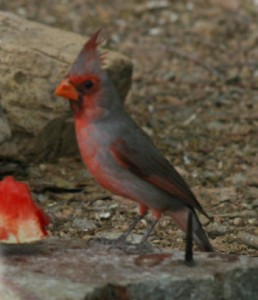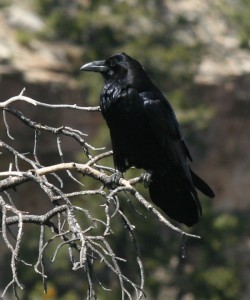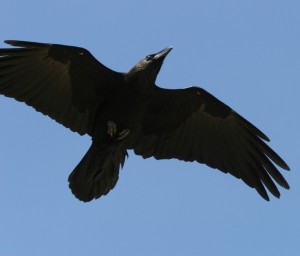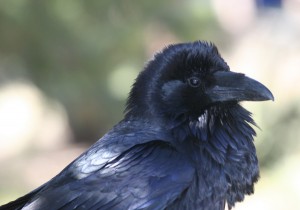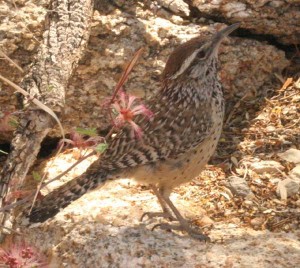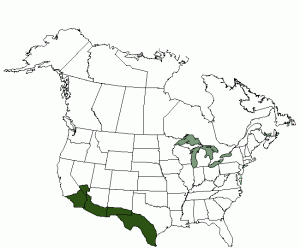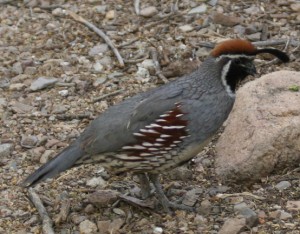All posts by traderscreek
Common Raven – Corvus corax
Cactus Wren – Information
Mourning Dove – Zenaida macroura
Mourning Dove
General: The Mourning Dove (Zenaida macroura) is a member of the dove family, C olumbidae. The bird is also called the American Mourning Dove, and formerly was known as the Carolina Pigeon or Carolina Turtledove. It ranges from Central America to southern Canada, including offshore islands. Many individuals in northern areas migrate south to winter within the breeding range where January temperatures are greater than minus 12 Celsius (10 F).
olumbidae. The bird is also called the American Mourning Dove, and formerly was known as the Carolina Pigeon or Carolina Turtledove. It ranges from Central America to southern Canada, including offshore islands. Many individuals in northern areas migrate south to winter within the breeding range where January temperatures are greater than minus 12 Celsius (10 F).
Mourning doves live in various open and semi-open environments, including agricultural and urban areas. The species has adapted well to areas altered by humans. The bird is abundant, with an estimated population of 130 million birds. In many areas, the Mourning Dove is hunted as a game bird for both sport and its flesh. Its plaintive woo-oo-oo-oo call is common throughout its range, as is the whistling of its wings as it takes flight. The species is a strong flier, capable of speeds up to 88 km/h (55 mph).
Mourning Doves eat almost exclusively seeds, which make up more than 99% of their diet. Rarely, they will eat snails or insects. Mourning Doves generally eat enough to fill their crops and then fly away to digest while resting. They often swallow grit such as fine gravel or sand to assist with digestion. The species usually forages on the ground, including at bird feeders.
Identification Tips: Mourning doves are approximately 10.5 inches long. The sexes are similar. They are a medium-sized, somewhat slender dove with very thin neck. Mourning 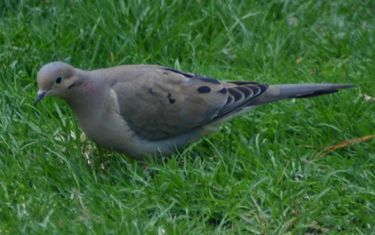 doves have black bills. Identification of adult mourning doves is: Pale buff-brown head, neck, breast, and belly, purple and green iridescence on neck, small black mark on lower neck, medium brown back and upperwings, with large black spots on coverts. Their long tail is pointed at the tip. They have dark brown tail with white tips to outer four tail feathers.
doves have black bills. Identification of adult mourning doves is: Pale buff-brown head, neck, breast, and belly, purple and green iridescence on neck, small black mark on lower neck, medium brown back and upperwings, with large black spots on coverts. Their long tail is pointed at the tip. They have dark brown tail with white tips to outer four tail feathers.
Coloration Juvenile: Dark brown mottled head neck and breast, scaly neck and upperwings with numerous black spots on coverts and scapulars. They have pale belly. Their medium length tail is pointed at the tip.
From Wikipedia, the free encyclopedia
Gambel’s Quail – Callipepla Gambelii
General: Gambel’s Quail (Callipepla gambelii) are plump, volleyball shaped birds whose preference for remaining on the ground stems from their inability to fly fast or for extended periods of time. These social birds reside in desert habitats of the American southwest and can be found hiding amongst shrubbery and dense, varied desert vegetation. A popular game bird, Gambel’s Quail populations are healthy because of reproductive success. They are categorized as Least Concern on the IUCN Red List.
Description: Gambel’s Quail are plump, round birds with short, square tails and wings, stout necks, and petite heads and bills. They are best known for their comma-shaped plume that sits atop both males’ and females’ heads, although males’ plumes tend to be fuller. They reach a mature length of just under 10” and weight of 5.5 oz. to 7 oz, and have a wingspan of 13.5” to almost 14.5”1.
Gambel’s Quail have chestnut/gray bodies, olive wings, cream bellies and white or cream markings. Their richly patterned plumage provides camouflage from predators. Quail living in areas with greater rainfall tend to be darker and more vivid overall. Sexual dimorphism is also evident. Males have black faces, necks and patches on their breasts, fuller darker plumes, and are generally more striking than females, who tend to be grayer with thinner plumes and no black markings. Juveniles are mottled in gray and brown and have miniature head plumes.
Gambel’s Quail are known to hybridize with California Quails as well as Scaled Quails, although it is not common2.
Although Gambel’s Quail are diurnal, they rest during the heat of midday in shady areas. In cooler temperatures, quail tend to be active for longer periods of time. These social birds spend much of their time walking in groups, called coveys, of 12 or more birds3. They are fast runners and tend to remain on the ground. They only fly when necessary, in short, explosive bursts but prefer to lay motionless and camouflaged to escape from predators.
Gambel’s Quail live in coveys that generally contain a mature pair and up to 16 young4. These coveys have specific home ranges that they do not defend; rather covey’s home ranges tend to overlap.
Gambel’s Quail communicate with a number of calls. In addition to clucking and chattering, they emit a loud, high pitched “ka-KAA-ka,”5 and a plaintive qua-el6.
Gambel’s Quail live, on average, 7.4 years in the wild7.
Habitat: Gambel’s Quail may be found in hot deserts, thickets, mesquite springs, mountain foothills, river valleys, shrublands, grasslands, plains, and fields throughout the American Southwest. They prefer areas with brush and diverse vegetation and to be in close proximity to a water source, although they have minimal, if any, free water requirements8. Areas with dense desert shrubbery and trees offer shade and protection to Gambel’s Quail during the day and a place to roost at night. Predators within their native habitats include snakes, coyotes, bobcats, foxes, and birds of prey.
Gambel’s Quail do not migrate and their annual movements typically do not exceed 1.5 miles.
Location: Gambel’s Quail are found in desert thickets and shrublands9 in the southwestern U.S., especially in Arizona. Populations may also be found in parts of Mexico, Texas, Utah, Colorado, Nevada, and California. There are small, non-native populations living in Hawaii, introduced beginning in 192810.
Diet: Gambel’s Quail are group foragers and feed twice a day, moving slowly along the ground in the morning and afternoon. Approximately 90% of their diet consists of plant matter, which they scratch up from beneath vegetation. They also consume seeds and leaves year round. Gambel’s Quail will eat insects during the spring and early summer, while partaking in reproductive activities. They also eat fruit, berries, and cacti during certain seasons and in certain geographic areas11.
Reproduction: Gambel’s Quail reach sexual maturity by one year of age, breed once annually and are generally considered monogamous. However, females have been observed leaving their young with the male in order to find a new mate and have a new brood. Reproductive success is affected mainly by two factors: temperature and rainfall. During years of above average temperatures and greater than normal rainfall, these birds experience reproductive success and, therefore, population growth (due in part to increased plant growth and food supplies.) These ideal breeding conditions oppose the usual dry, arid habitat of the Gambel’s Quail.
To attract their mates, male Gambel’s Quail give small offerings of food to females. Studies have shown that males who exhibit faster rates of food offering, also called “tidbitting,” tend to have greater reproductive success.
Females tend to choose nesting sites that are hidden or in a protected place on the ground, although quail nests can be located up to nearly 30’ off the ground if conditions allow. These nests are shallow and broad, often measuring 5” to 7” wide and are lined with feathers, leaves, or vegetation.
Between 10 to 12 smooth white eggs are laid, camouflaged with brown splotches. During dry years, clutches tend to be smaller. Female Gambel’s Quail do the majority of incubation, lasting between 21 and 23 days on average, although males will assume incubation duties if the female leaves the nest or dies. Down-covered young are able to follow their mothers, run and feed soon after birth, and both parents participate in caring for the young. In the event that one parent leaves the brood or dies, a single parent is capable of caring for the young quail12.
Notes of Interest: The Gambel’s Quail is a popular game bird. Hunters enjoy a long season with few restrictions and are able to bag up to 15 birds in a single day13.
Footnotes
1. http://www.allaboutbirds.org/guide/Gambels_Quail/id
2. http://animaldiversity.ummz.umich.edu/accounts/Callipepla_gambelii/
3. http://www.allaboutbirds.org/guide/Gambels_Quail/id
4. http://animaldiversity.ummz.umich.edu/accounts/Callipepla_gambelii/
5. http://www.allaboutbirds.org/guide/Gambels_Quail/id
6. http://animals.nationalgeographic.com/animals/birding/gambels-quail/
7. http://animaldiversity.ummz.umich.edu/accounts/Callipepla_gambelii/
8. http://animaldiversity.ummz.umich.edu/accounts/Callipepla_gambelii/
9. http://animals.nationalgeographic.com/animals/birding/gambels-quail/
10. http://animaldiversity.ummz.umich.edu/accounts/Callipepla_gambelii
11. http://animaldiversity.ummz.umich.edu/accounts/Callipepla_gambelii/
12. http://animaldiversity.ummz.umich.edu/accounts/Callipepla_gambelii/
13. http://animaldiversity.ummz.umich.edu/accounts/Callipepla_gambelii/
http://www.allaboutbirds.org/guide/Gambels_Quail/id
http://animaldiversity.ummz.umich.edu/accounts/Callipepla_gambelii/
http://animals.nationalgeographic.com/animals/birding/gambels-quail/
Northern Flicker – Colaptes Auratus
Northern Flicker
The Northern Flicker (Colaptes auratus,) is a widespread and common species that can be spotted foraging along the ground for insects in your backyard or in woodlands across much of North America. Like all woodpeckers, they are often heard before they are spotted, capable of producing loud drumming on wood or metal. Their striking coloration sets them apart from other woodpecker species, flashing brilliant yellow or red highlights depending on geographic location. While Northern Flickers are widespread and listed as Least Concern on the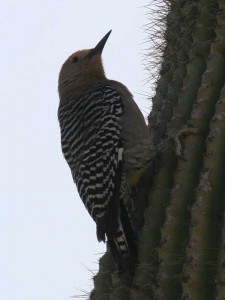 IUCN Red List, populations across much of their geographic range have been experiencing declining numbers.
IUCN Red List, populations across much of their geographic range have been experiencing declining numbers.
Description: The Northern Flicker is a large species of woodpecker, easily distinguished by their white rumps, black-scalloped plumage, and striking black chests. They reach a mature size of 11” to 12” in length, and 4oz. to 6oz. in weight with a 16.5” to 20” wingspan and 4.5” to 5” long flared tail (which tapers to a point1.) They have slender, round heads and 1.5” long bills that curve slightly downward. Their barbed tongues are used to capture insects, reaching a length of 2” when thrust out of their bills.
The Northern Flicker is the only woodpeckers to have white rumps and gray-brown barred backs marked with black scallops. Their undersides are pale buff to white with black spotting and their chests feature black crescents. Northern Flicker males have tan heads, gray faces, red or black moustaches, gray crowns and red or black napes and are generally more colorful than females2. Geographic color variations occur. The flight feathers, underwings and beneath the tail are highlighted with bright yellow (in eastern populations) or salmon-red (in western populations.)
Northern Flickers in eastern regions are referred to as ‘Yellow-Shafted,’ known for the bright yellow coloration that appears on the flight feathers, underwings, and below the tail. They also have red napes and black moustache stripes. Western populations, known as ‘Red-Shafted,’ have salmon-red coloration on flight feathers, underwings, and below their tails. They lack the red nape found in other populations, have red moustaches, paler undersides and broader crescents on their breasts. In the Great Plains region on the edges of eastern and western habitats, hybrids can occur. These individuals typically have a combination of the characteristics of eastern and western populations
Northern Flickers are one of the only North American woodpecker species that is migratory. Northern populations move to southern portions of their geographic range between September and October and return to their northern habitats between March and April. Some populations have been observed migrating to Cuba, the Grand Cayman Islands, or as far south as Nicaragua.
Northern Flickers prefer to forage on the ground but may also be found climbing tree trunks or perched upright along horizontal branches. In flight, they use an undulating flight pattern, alternating heavy wing flaps with periods of gliding to create a bouncy, slow flight3.
Male Northern Flickers can be quite aggressive, especially in the defense of a mate or territory. Displays of aggression can include “bill poking,” which consists of pointing and pecking their bills in the direction of an opponent, “head swinging, and “head bobbing.” Aggression may also be communicated through fanned out tails4.
In addition to body posture, Northern Flickers communicate with a variety of sounds. Their calls include a piercing rattle, which has an undulating volume and lasts for around 8 seconds. This call is made by individuals establishing mating pairs and territories and can be heard in the spring and early summer. Another sound consists of a single, piercing note (which lasts half a second) that is made year round called a kyeer. Interacting Northern Flickers often make a soft, slow wicka-wicka sound. Most often associated with woodpeckers is the loud, rhythmic drumming they produce by hammering on wood, or metal. This drumming is used as a means of communication and defense. Northern Flickers are capable of 25 evenly spaced beats per second, often interspersed with long series of wick-wick-wick sounds5. You may also hear the incessant calls of young Northern Flickers in the late summer.
Northern Flickers have been known to live to over 9 years old but in the wild most Northern Flickers survive only a few years.
Habitat: Northern Flickers can be found in woodlands, flooded swamps, along forest edges or marsh edges, in city parks, suburban backyards and birdbaths, open fields amongst scattered trees, and in western mountain ranges in all stages of forest (as high up as the tree line.)
Within their habitats, Northern Flickers are vulnerable to birds of prey, including Cooper’s Hawks. Raccoons, snakes, and squirrels prey on their young. However, when approached by a predator, Northern Flickers show little response. They may fly tentatively around the predator or thrust their bill in the direction of the threat6.
Location: The geographic range of the Northern Flicker stretches across much of North America, from Alaska to Quebec and south across the entire United States. As a migratory species, some populations of Northern Flickers migrate to southern areas of their geographic range or as far south as the Grand Cayman Islands, Cuba, and the highlands of Nicuargua7.
Diet: Northern Flickers are omnivorous and are often found chiseling into the ground in search of insects. Like other woodpeckers, Northern Flickers also chisel into wooden surfaces for boring insects. First, a Northern Flicker will tap on a surface to listen for insect activity within. After chiseling a hole with their curved bill (in the ground or in wood) they insert their 2” long barbed tongue to snare their meal. Their diets consist mainly of ants, beetles, and beetle larvae. They also consume fruit (including wild cherries, grapes, elderberries, hackberries, and bayberries,) seeds, nuts, flies, moths, butterflies, caterpillars, aphids, wasps, termites, crickets, grasshoppers, snails, and a variety of vegetation (including poison ivy, oak and sumac, Virginia Creeper, Dogwood, and Hackberry.) During the fall and winter their diets consist mainly of fruit.
Reproduction: Northern Flickers tend to breed once annually during their breeding season, which occurs between February and July (although these birds have been known to breed twice within one breeding season.) Individuals return to the same breeding area year after year.
Beginning in the early spring, male Northern Flickers participate in rival displays to attract potential mates. These shows, called “fencing duels,” are preformed in front of females and may include head bobbing (in males use their raised bills to draw figure-eight patterns in the air,) and wicka sounds.
After mating pairs have been formed, both males and females begin excavating a nest. These nests are often built in cavities in trees (sometimes within a nest formerly used by those birds or other birds,) within ground burrows (previously built by other bird species such as Belted Kingfishers,) in old utility or fence posts, or within house siding. Northern Flickers are unlike other woodpecker species in their tendency to reuse their nesting cavities from previous breeding seasons or cavities made by other species8. Nests are excavated to a depth of 13” to 16” and lined with woodchips, widened at the bottom to accommodate eggs and incubation. Nests have entrances that are 3” in diameter and are generally 6’ to 15’ off the ground, although occasionally nests are built substantially higher9.
Between 3 to 12 glossy white eggs (measuring .7” to 1.5” in length) are laid and incubated by both parents for 11 to 13 days. The chicks are born (using their egg teeth to break through their shells,) pink, naked, and clumsy with closed eyes. Both parents feed the chicks even after they have fledged. The chicks begin clinging to the nest walls by 17 days old and begin following their parents out to forage before they are ready to leave the nest at 24 to 27 days old (or by mid-July10.) The chicks molt and develop their adult coloration between June and October. Sexual maturity is reached by one year of age.
Notes of Interest: Northern Flickers are protected under the Federal Migratory Bird Treaty Act.
Footnotes
1. http://www.allaboutbirds.org/guide/northern_flicker/id
2. http://animaldiversity.ummz.umich.edu/accounts/Colaptes_auratus/
3. http://www.allaboutbirds.org/guide/northern_flicker/id
4. http://animaldiversity.ummz.umich.edu/accounts/Colaptes_auratus/
5. http://animals.nationalgeographic.com/animals/birding/northern-flicker/
6. http://animaldiversity.ummz.umich.edu/accounts/Colaptes_auratus/
7. http://animaldiversity.ummz.umich.edu/accounts/Colaptes_auratus/
8. http://www.allaboutbirds.org/guide/northern_flicker/id
9. http://www.allaboutbirds.org/guide/northern_flicker/id
10. http://wdfw.wa.gov/living/woodpeckers.html
